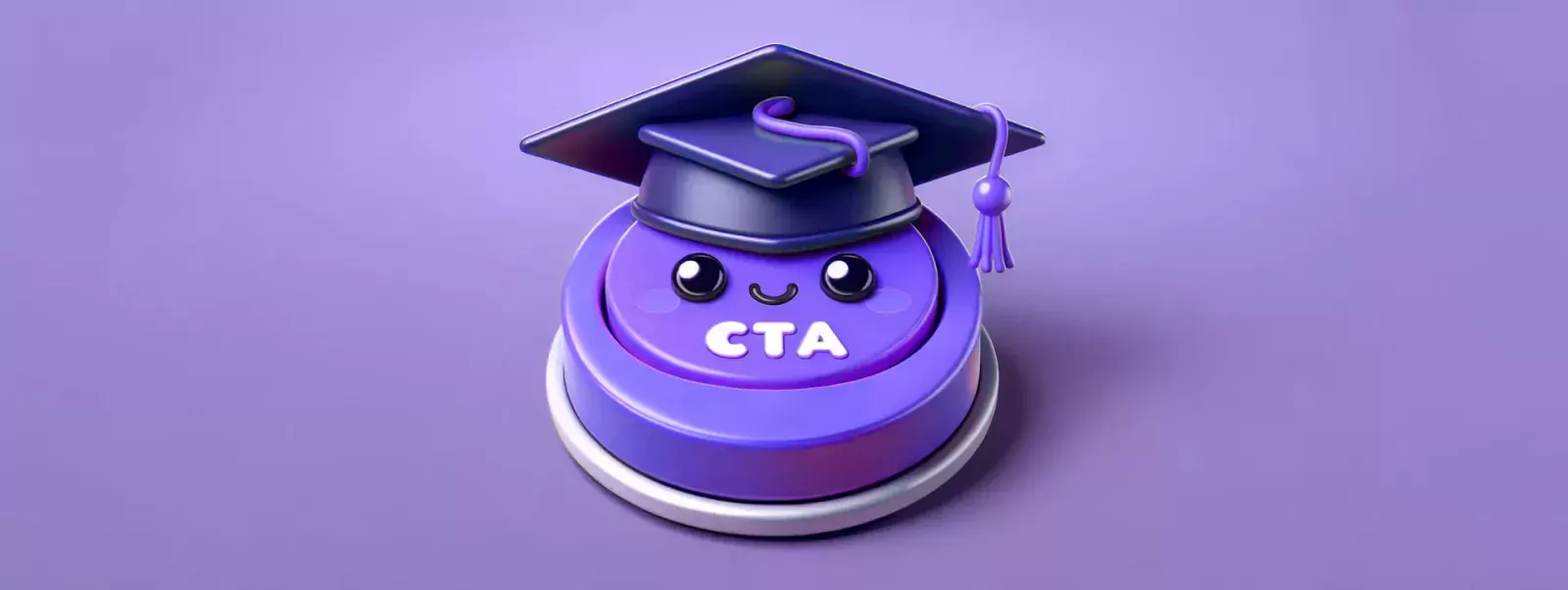
Are you ready to learn the secret to making your digital marketing campaigns a success? Look no further than the call to action. This little but mighty phrase is the heart and soul of persuading your audience to take action. Without a compelling CTA, your content is like a ship without a rudder, lost in the vast sea of the internet.
But fear not! This comprehensive guide will teach you everything you need to know about CTA button best practices, from their critical role in guiding user behavior to how to craft the perfect CTA text that will amplify your marketing strategies. Get ready to take your digital marketing game to the next level!
Get 10% Discount on Your First Order at Contenteam!
The Definition of CTA
A call to action, also known as CTA, is a form of content that guides and directs users toward a specific action. It can be a button, a link, or a clear instruction that prompts the user to immediate action, for example, to encourage a purchase.
A CTA is not just a simple button or line in an advertisement; it is a strategic tool that leads users to a particular goal. It is the point where a message transforms from a passive piece of information to an active invitation for engagement. CTAs, such as "Buy Now," "Learn More," or "Subscribe Today," are created to convert an interest into action, making it a crucial element of digital marketing.
Importance in Digital Marketing

CTAs play a crucial role in digital marketing as they guide users towards making decisions. They are the catalysts of the user journey that transform casual interest into committed action and significantly enhance the effectiveness of a marketing campaign.
Did you know that despite the clear benefits of using Calls to Action (CTAs) in digital marketing, they are still being underutilized by many businesses, especially smaller ones? That's a missed opportunity! But why are CTAs not being used more often? It could be that some businesses don't realize the power of a well-placed CTA button, or they may not have the knowledge or resources to effectively implement and optimize them.
Incorporating effective call to action buttons is crucial for businesses to engage their target audience and improve their online marketing efforts. In this guide, we'll explore everything you need to know about CTAs, from their psychological impact to their measurable benefits.
The Psychology Behind CTAs

CTAs focus on understanding human motivations and decision-making processes. Well-crafted action-oriented text triggers user behavior through prompts such as gaining something or fear of missing out. Effective CTAs understand the target audience's mindset and resonate with their motivations and needs.
Here is a brief list of psychological triggers with examples of Calls to Action (CTAs) that utilize them:
Fear of Missing Out (FOMO)
This trigger originates from the concept that people desire to experience what others are experiencing and do not want to miss out on anything. For instance, "Limited time offer - sale ends tonight!".
Urgency
This one helps to create urgency and encourages people to act promptly. For example, "Only 3 items left in stock - order now!".
Social Proof
Social proof relies on the notion that people tend to emulate the actions of others, thereby increasing the likelihood of taking similar actions themselves. An example is "Join the 10,000+ satisfied customers who have already signed up!".
Scarcity
This trigger creates a sense of scarcity and encourages people to act before it is too late. For instance, "Only 2 days left to get your gift with purchase!".
Personalization
Tailoring a message to an individual is a trigger that promotes taking action. For example, "Welcome back, [Name]! Here's a special offer just for you." Compared to generic or vague CTAs, Personalized CTAs perform 202% better.
It is also an effective strategy to move potential customers through the sales funnel quickly and efficiently which leads to better conversions.
Best Practices to Create an Effective CTA

Crafting a compelling CTA involves more than just the words used. Here are some best practices for creating a compelling CTA:
Wording
When creating call to action buttons, it is important to use language that is clear, concise, and action-oriented. Using imperative voice for button text one of the best practices. For example, text like "Start Your Free Trial" can help increase conversions.
Optimize the button text by keeping the CTA short and sweet, ideally five words or less, to ensure it fits seamlessly into the button format. Lastly, it is crucial to highlight the benefits that the user will receive from completing a specific transaction, as effective CTAs are benefit-oriented.
Color
Choose a color for the CTA button that contrasts with the page's background. The color should also align with the overall design and branding. Color plays a significant role in visibility and emotional impact. A study conducted by Hubspot found that the red button had 21% higher performance than the green button.
Placement
To place a CTA button on your web page, choose a prominent location that makes sense in the user's journey. Common placements include above the fold, at the end of the content, or as a floating button. You can also use CTA blocks like a newsletter subscription on a landing page, which is visually separated from other content.
According to a survey, even though it's common to have a call to action button above the fold, people prefer to read a bit more about what is being offered before seeing the CTA. As a result, having a CTA above the fold can decrease conversions by 17%.
Size
Strike a balance between the size of the CTA and other content on the page. The CTA should be large enough to be noticeable but not so large that it overwhelms other elements on the page. Do not forget about the white space to draw users attention to the call to action button.
Types of CTAs
Crafting a compelling CTA involves more than just the words used. Here are some best practices for creating a compelling CTA:
CTA buttons: The most common form of call to action that is usually found on landing pages and emails and it prompts users to take specific actions such as "Subscribe," "Buy Now," or "Download." According to Copyblogger, Using CTAs as buttons can increase clicks by 45%. Customizing the color, style, and size of the button can help users identify and click on it more easily.
Hyperlink CTAs: Often used within supporting text, leading the user to another page or resource. They are more subtle but effective in the right context. Our team highly recommends including hyperlinks in your blog posts, as HubSpot reports a 121% increase in conversion compared to banner advertisements.
Image CTAs: These combine visuals with action oriented text and effectively capture attention. They are commonly used in banners or sidebars.
Form CTAs: Used when the desired outcome involves data submission, like newsletter sign-ups or contact forms.
Floating or Sticky CTAs: These remain visible as the user scrolls through a page, maintaining a constant presence.
Understanding the different types of CTAs and using them effectively is crucial for aligning with campaign goals and audience preferences. Knowledge of their critical elements and psychology, as well as the available types, is foundational for leveraging their full potential.
Best Practices in CTA Design
Crafting a compelling CTA involves more than just the words used. Here are some best practices for creating a compelling CTA:
CTA buttons: The most common form of call to action that is usually found on landing pages and emails and it prompts users to take specific actions such as "Subscribe," "Buy Now," or "Download." According to Copyblogger, Using CTAs as buttons can increase clicks by 45%. Customizing the color, style, and size of the button can help users identify and click on it more easily.
Hyperlink CTAs: Often used within supporting text, leading the user to another page or resource. They are more subtle but effective in the right context. Our team highly recommends including hyperlinks in your blog posts, as HubSpot reports a 121% increase in conversion compared to banner advertisements.
Image CTAs: These combine visuals with action oriented text and effectively capture attention. They are commonly used in banners or sidebars.
Form CTAs: Used when the desired outcome involves data submission, like newsletter sign-ups or contact forms.
Floating or Sticky CTAs: These remain visible as the user scrolls through a page, maintaining a constant presence.
Understanding the different types of CTAs and using them effectively is crucial for aligning with campaign goals and audience preferences. Knowledge of their critical elements and psychology, as well as the available types, is foundational for leveraging their full potential.
Picking The Right Spot on The Page

The right CTA placement plays a crucial role in its effectiveness. Choose a contextually relevant area that feels like a natural next step for the user. For instance:
At the end of a blog post: Add a CTA button after a blog post to encourage readers to take the next step. The CTA should be related to the post's content and offer more information on the topic.
On product pages: The product page is crucial for e-commerce and retail websites. A prominent CTA like the "Add to Cart" or "Buy Now" button is essential to encourage customers to buy. It should be visually appealing, intuitive, and seamlessly blend with the particular page.
After demonstrating value: Highlight the benefits and features of your service and offer a free trial or demo to generate interest and make the call-to-action feel like a natural progression.
Place the CTA in more than one section: To ensure that all visitors see your call-to-action (CTA), consider placing it in multiple areas of your webpage. Try adding one CTA button above the fold, one in the middle, and one near the end. The number of CTAs you place will depend on your content length.
To make a CTA button more effective, you need to consider the context in which you present it. Businesses can significantly improve user engagement and increase conversion rates by carefully choosing where and how to place the CTA.
Track Performance by Testing
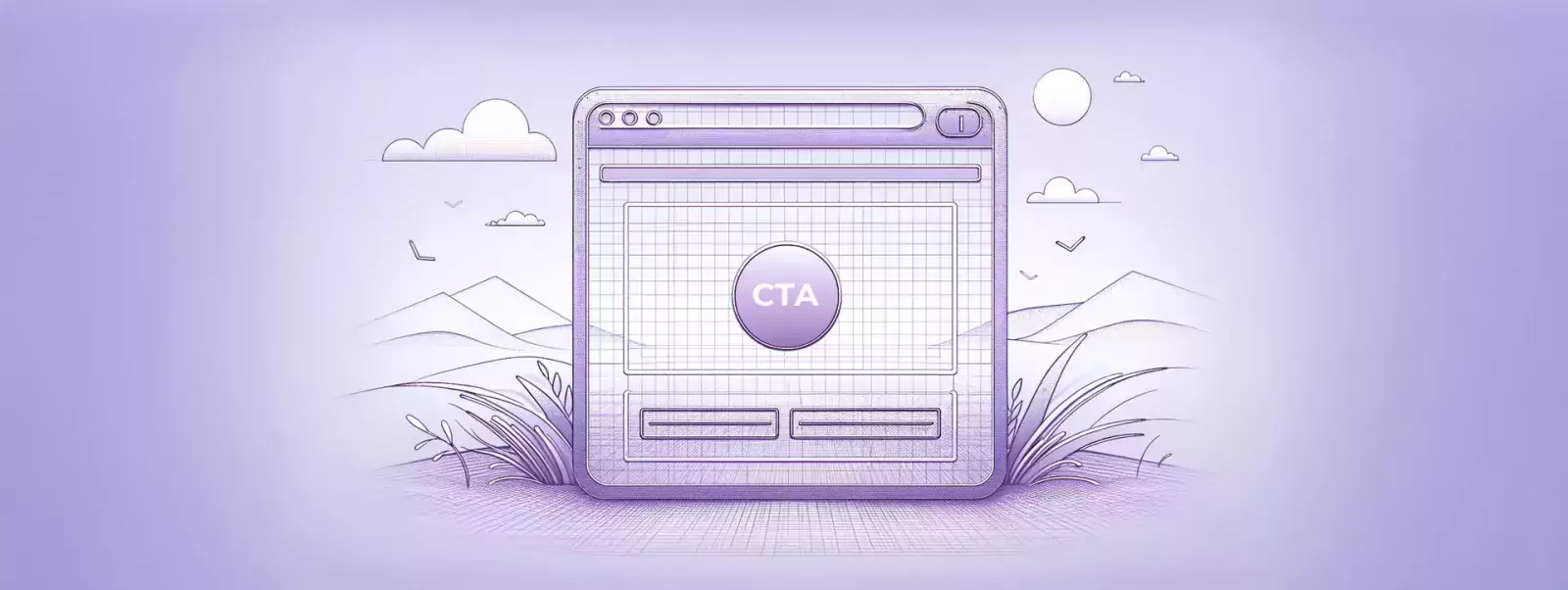
A/B testing is a valuable method for determining which of two options performs better: be it an advertisement, image, or a button text. It involves changing one variable, such as color, wording, or placement, and comparing the results. To conduct effective A/B testing, follow these steps:
Define a Clear Objective: What do you want to achieve? More clicks, higher conversion rates, or increased sign-ups?
Create Two Variants: Change one element of the CTA in the second variant. While you can change more than one element, it will make it more difficult for you to analyze the results. Changing button text is a great first step.
Test Simultaneously: We recommend running both versions simultaneously on the same target group to achieve accurate results. Running different versions on separate target groups or at other times may lead to less accuracy.
Analyze Results: Use analytics to determine which version performs better and understand why.
Personalization and Targeting
Personalizing call-to-actions (CTAs) based on user behavior, demographics, or stage in the customer journey can significantly increase their effectiveness. Some techniques to achieve this include:
Behavioral Triggers: Display different CTAs based on user actions, like a specific CTA for first-time visitors and another for returning users.
Segmentation: Use different CTAs for particular audience segments. For example, use a different CTA for users from a social media campaign than those from an email campaign.
Dynamic CTAs: Implementing CTAs that change based on the user's past interactions with the site or their preferences.
Boosting CTAs with “Click Triggers”
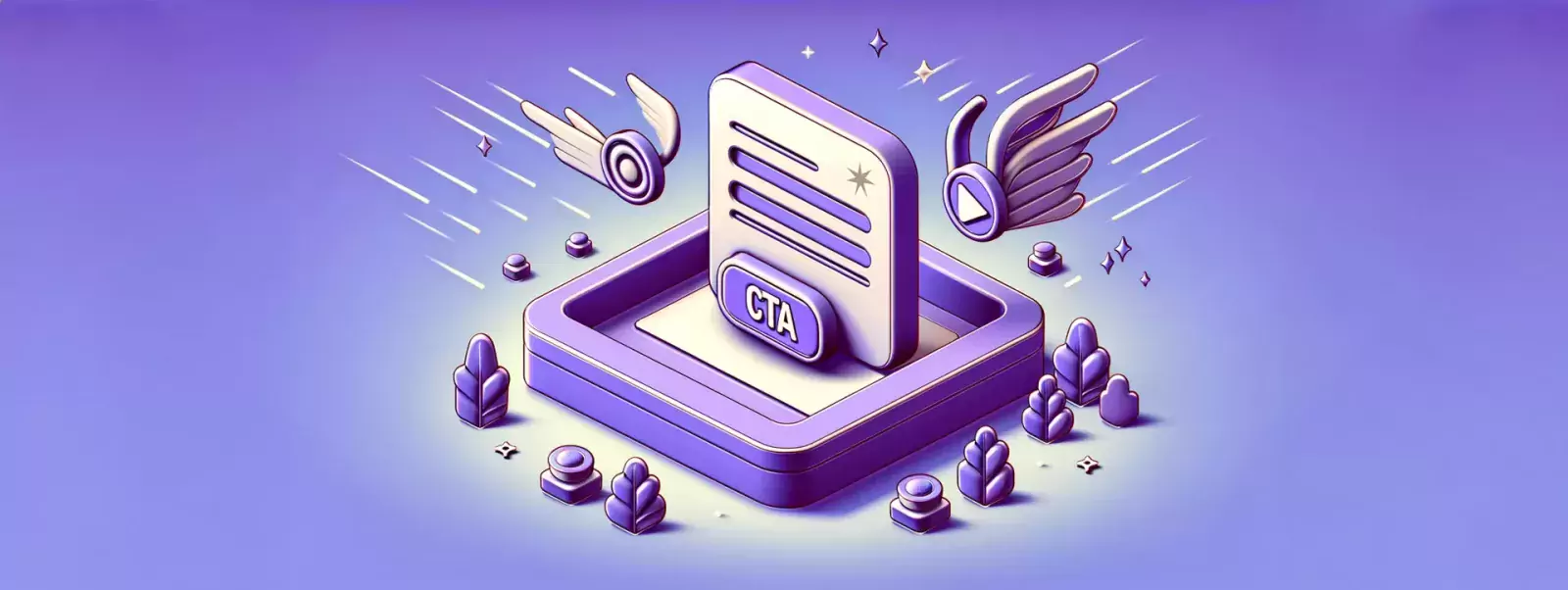
Click triggers are elements that can enhance the effectiveness of CTA buttons. They provide motivation or reassurance to the user, increasing the likelihood of conversion by reducing barriers or boosting confidence. Visitor clicks strategically operate at the conversion point, tackling last-moment hesitations or delivering the final nudge needed to drive action.. These can include:
Social Proof: This could be a testimonial, review, or tweet from a satisfied customer, showcasing the value or satisfaction others have derived from the product or service.
Data Points: Present a compelling statistic or fact that underscores the benefit or popularity of the offering.
Star Ratings: Display ratings that reflect the quality and reliability of the product or service.
Low-Price: Emphasize affordability or value-for-money aspects.
Guarantees: Offer guarantees that can significantly reduce perceived risk, such as money-back guarantees, returns or quality assurances.
Shipping: Highlight benefits like free shipping or easy return policies, which can be particularly effective in e-commerce contexts.
Payment Options: Showcase various available payment methods or financing options to ease payment concerns.
Security Features: Indicate secure transaction processes with icons or messages to enhance trust.
Privacy Assurance: Assure users of data privacy to alleviate privacy-related anxieties.
Risk-Minimizing Messages: Clarify what happens post-click to reduce apprehension, such as detailing the steps after signing up.
Value Proposition: Articulate the unique value proposition, reminding users why this offer benefits them.
In conclusion, click triggers are a powerful tool to increase the effectiveness of CTAs by addressing specific user concerns, breaking down barriers to conversion, and boosting the user's confidence to take action.
Aligning CTA Buttons With The Marketing Goals
A compelling CTA copy strategy is essential in guiding users toward a specific path that align with your marketing goals. Whether it's encouraging blog readers to engage further, prompting video viewers to subscribe, or converting page visitors into customers, each CTA should be contextually relevant and strategically positioned within your marketing funnel.
Boosting Lead Inquiries
Lead generation is crucial for sales-driven strategies. Techniques such as newsletter subscriptions effectively build your customer database, providing a platform for ongoing engagement and relationship-building. Newsletters can also offer valuable information and exclusive deals, which can help foster a loyal customer base.
Lead Magnets: Offering something valuable like white papers, guides, or research in exchange for contact details is an effective way to grow your database. This CTA leverages the appeal of free resources to gather essential user information.
Free Trial: A 'try before you buy' CTA allows users to experience your service, which can be a decisive factor in their purchase decision. Prompting for credit card details either at the beginning or end of the trial period can lead to conversions post-trial.
Encouraging Product Purchases
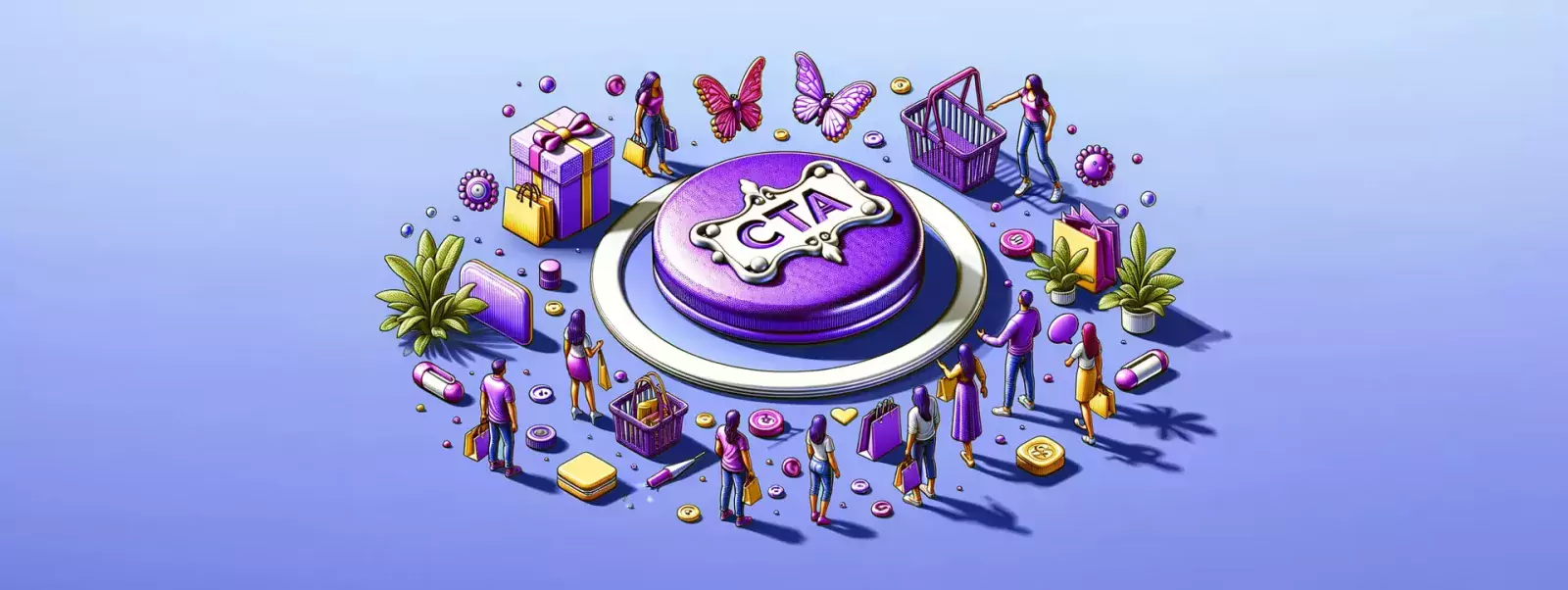
Ultimately, the goal is to drive a web visitor through a journey of discovery, trust-building, and, finally, to make a purchase.
Contact Sales: Adding a 'Contact Us' call to action can help interested customers connect with your sales or support team if you offer high-value items or complex services. This personalized interaction can increase the conversion rate of your landing page.
Shop Now: This call to action button is designed to encourage users to browse your store without explicitly asking them to purchase. It implies that a purchase could happen, guiding users into the sales funnel in a non-intrusive manner.
Discount Offers: Offering a percentage off, especially on multiple items, can be a strong incentive for a purchase. This type of call-to-action appeals to the universal desire to save money, potentially increasing the average order value.
Book Now: If you offer services that are already being utilized by your customer, such as coaching or gym sessions, adding a 'Book Now' call-to-action can prompt immediate action without directly requesting payment.
Free Shipping: Providing free shipping for orders over a certain amount can incentivize customers to buy more, offsetting the cost of shipping with additional purchases. This offer can also be extended to include a free gift or bonus service.
Captivating to Learn
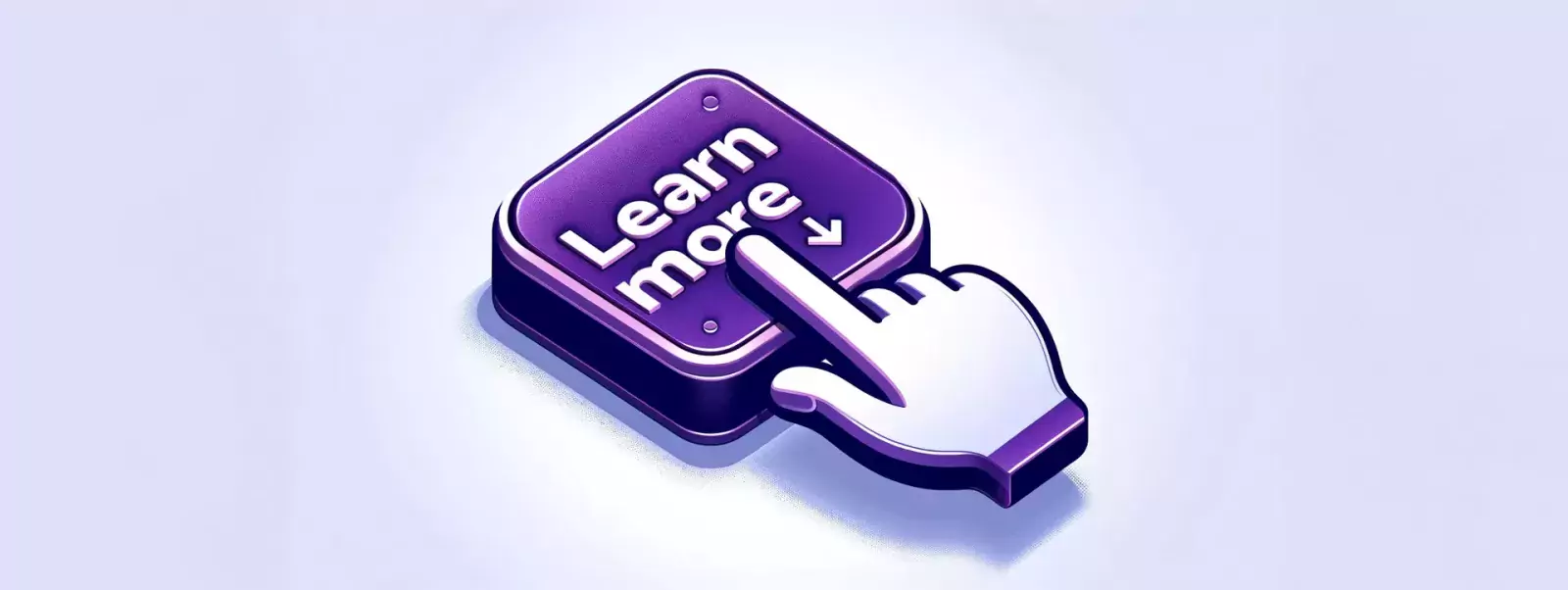
Educating your audience can be a powerful strategy, especially for upselling or establishing authority in your field.
"Learn More," "Discover," and "Explore" are calls-to-action (CTAs) that encourage users to expand their knowledge on a given subject. These CTAs usually lead to sign-up forms or lead magnets for additional information.
The "Enroll Now" CTA button is commonly used for educational content and requires a more formal commitment. This CTA often results in a certification or some other tangible outcome.
Building Brand Awareness

If the focus is on increasing brand visibility, the CTAs will differ from those aimed at direct conversions.
Like and Share: Commonly used on social media, these CTAs help in spreading your content wider, increasing brand reach and recognition.
Enter to Win: Competitions and giveaways can be engaging ways to increase brand visibility. Winners often share their experiences, further amplifying your
Key Takeaways
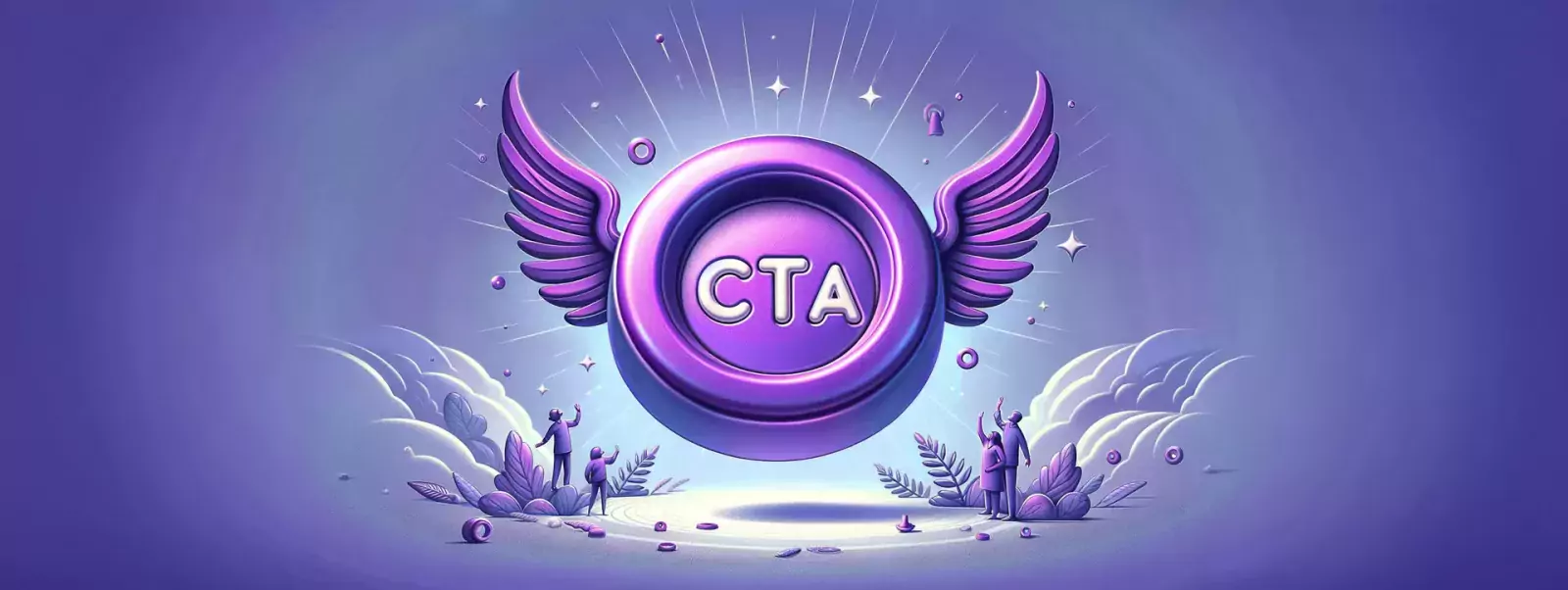
And that's a wrap for this episode! We hope you enjoyed this exploration into the essential strategies of effective usage of CTA buttons.
In this guide on call to actions buttons we explored the nuances of using CTAs to engage users and drive conversions. We covered the psychological factors that influence user behavior, as well as the strategic deployment and design principles that are essential for effective marketing. CTAs are more than just buttons or links; they are a critical element in creating customer interactions. Here are the key takeaways from our guide, which encapsulate the core of effective CTA strategy:
Clarity and Context: A CTA should be clear, concise, and action-oriented. It should also be relevant to the surrounding text. Combining visually distinct design with a clear and concise button text makes a CTA effective.
Psychology of CTAs: It's crucial to understand the user's motivations and emotional triggers, such as urgency or exclusivity, while crafting a CTA. This understanding can help in creating CTA buttons that resonate with the user and encourage them to take action.
Strategic Placement and Personalization: CTA placement should be carefully considered. Personalizing them based on user behavior or preferences can significantly increase their effectiveness.
Importance of A/B Testing: Regularly testing and optimizing CTAs through A/B testing is vital to understand what resonates best with your audience.
Leveraging Click Triggers: Enhancing the persuasiveness of a CTA by surrounding it with reassuring or motivational elements like social proof, guarantees, or special offers.
Alignment with Marketing Goals: A CTA button should be directly aligned with your overall marketing strategy. Whether that’s increasing subscriptions, generating leads, making sales, or building brand awareness.
Crafting effective CTA buttons is crucial for digital marketing success. Mastering this art can help achieve marketing goals, be it web visitors or website conversions.
